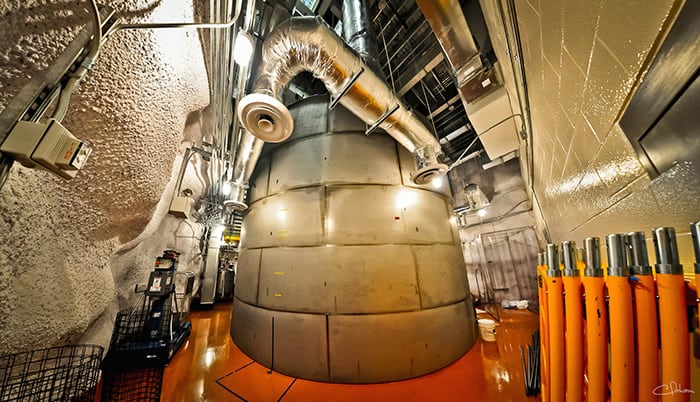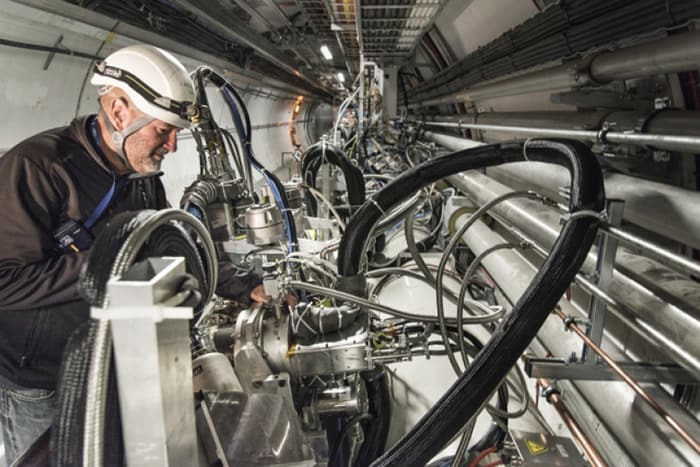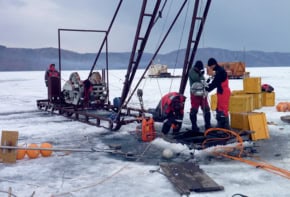Flash Physics is our daily pick of the latest need-to-know developments from the global physics community selected by Physics World‘s team of editors and reporters

Hubble spots Europa plumes
Astronomers using the Hubble Space Telescope have spotted water jets erupting from Europa – one of Jupiter’s 67 moons. The plumes rise around 200 km above the surface of Europa, which is slightly smaller than the Earth’s Moon with a diameter of about 3100 km. Such plumes have been detected before, when in 2013 Hubble discovered one spraying from Europa’s south pole. Now the craft has spotted plumes three more times, putting the finding on a much firmer footing. The result will also help astronomers to determine whether life exists in the salty ocean hidden under Europa’s icy surface.
Light reflects from just a few atoms

Light that would otherwise flow freely through an optical fibre has been reflected back using less than 2000 atoms. In experiments done by two independent groups – one led by Julien Laurat at the Pierre and Marie Curie University in Paris and the other by Jürgen Appel at the University of Copenhagen – light was transmitted along very thin fibres that are just a few hundred nanometres in diameter. This is smaller than the wavelength of the light used by the experimenters and this means that about one third of the light propagates on the outside of the fibre in the form of an evanescent wave. By shining two different laser beams of light into the fibre, the teams were able to create a standing wave of evanescent light that can trap atoms in an optical lattice near to the surface of the fibre. The spacing between the atoms was chosen to correspond to an integer multiple of one-half of the wavelength of the light to be reflected. This is the condition for Bragg reflection, and when the experimenters introduced such light into the fibre, they found that as much as 75% was reflected back. With further development, the technique could be used to create optical devices, and it could even find use in quantum simulation and quantum computing. The experiments are described in Physical Review Letters.
Dark-matter detector moves forward

The US Department of Energy has approved the start of construction for the LUX-ZEPLIN (LZ) dark-matter detector. Researchers will now begin to build major components for the experiment as well as prepare space for it at the Sanford Underground Research Facility in Lead, South Dakota. When finished in 2020, LZ will hunt for theoretical particles known as weakly interacting massive particles via a chamber filled with 10 tonnes of purified liquid xenon. The detector is named after the merger of two existing dark-matter experiments: the Large Underground Xenon (LUX) experiment in Lead and the UK-based ZEPLIN experiment. LZ, which involves a collaboration of more than 30 institutions and 200 scientists worldwide, is expected to be around 100 times more sensitive than its predecessors.
The LHC begins low-luminosity run to study elastic scattering

The Large Hadron Collider at CERN in Geneva has begun a special “low-luminosity” run this week. This will allow the ATLAS/ALFA and TOTEM experiments to observe the elastic scattering of protons. This occurs when two protons do not collide head-on in the detectors and so do not create new particles. Instead, the protons exchange glancing blows and are then detected. During a normal high-luminosity run, these elastic interactions are not seen because protons are much more likely to collide with each other and the detector. Elastic scattering is of interest to particle physicists because it provides insights into the internal structure of protons such as the nature of quarks and gluons. The studies should also reveal more about what makes elastic interactions possible and also help to improve our understanding of high-energy cosmic rays.
- You can find all our daily Flash Physics posts in the website’s news section, as well as on Twitter and Facebook using #FlashPhysics. Tune in to physicsworld.com later today to read today’s extensive news story on diamond magnetometers.



